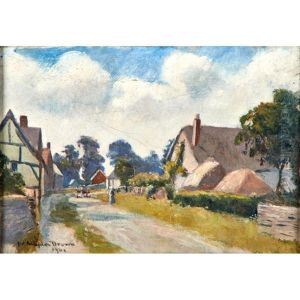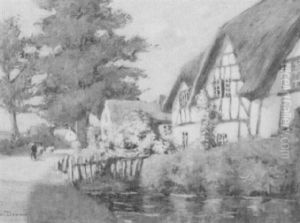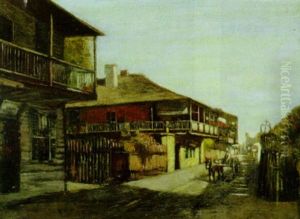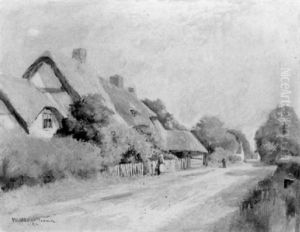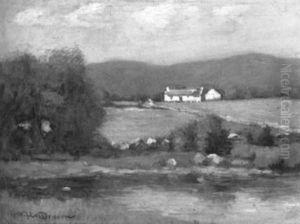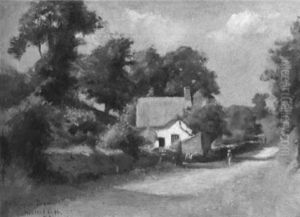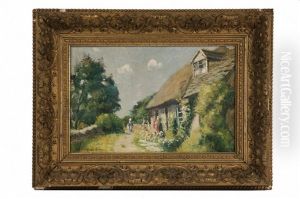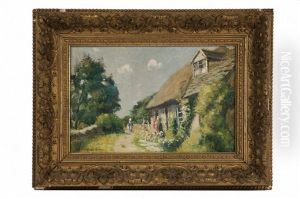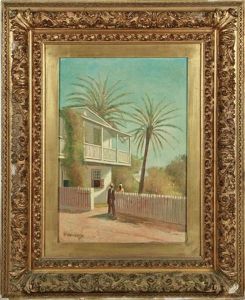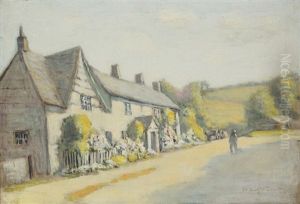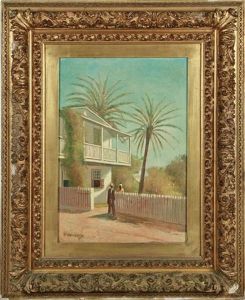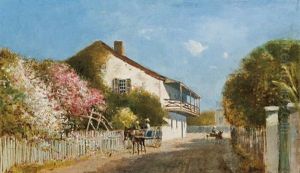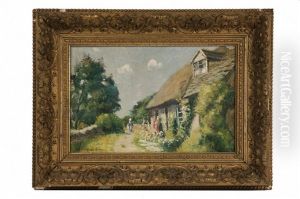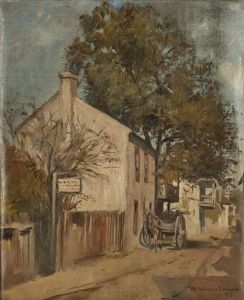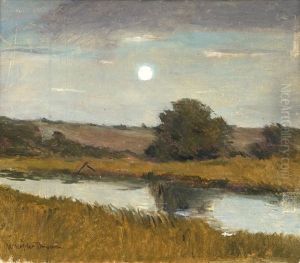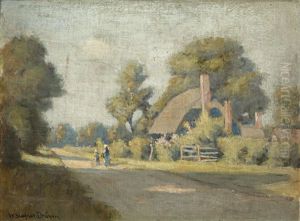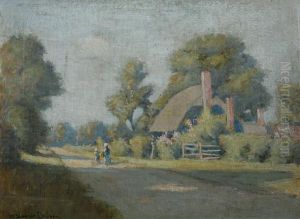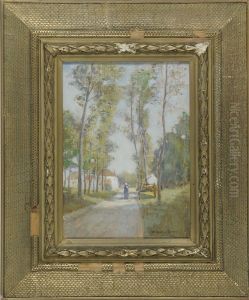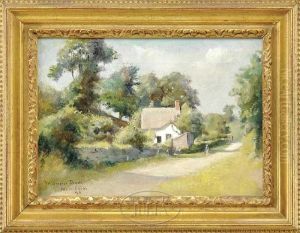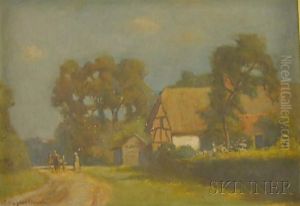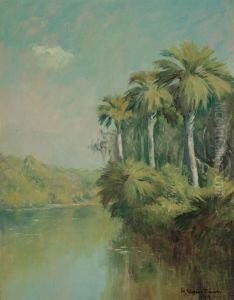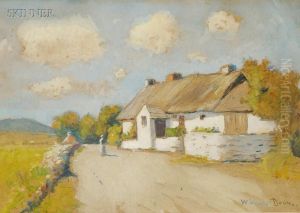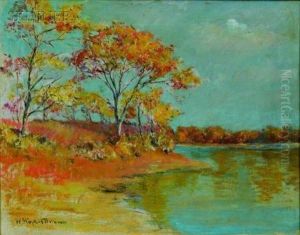William Staples Drown Paintings
William Staples Drown was an American artist and educator, known primarily for his work as an etcher and illustrator. Born in 1856, Drown embarked on a career that would see him become a notable figure in the art world of his time, though he may not be widely recognized today outside of specialist circles.
After studying at the Rhode Island School of Design, Drown traveled to Paris to continue his education. There, he was influenced by the French Barbizon school and the etching revival that was underway in Europe. His work often reflected these influences, capturing landscapes, rural scenes, and daily life with a sensitivity to light and atmosphere that was characteristic of the Barbizon painters. He became skilled in the technique of etching, which involves incising a design onto a metal plate, usually copper, with a sharp tool called a burin. After the plate is inked, it is used to print the image onto paper, a process that Drown mastered and often taught.
As an educator, Drown was instrumental in the development of the fine arts program at the Rhode Island School of Design, where he taught for many years. His contributions to the school helped shape the curriculum and provided inspiration to a generation of young artists. He was committed to the idea of art education as a means of fostering individual talent and artistic growth.
Drown's illustrations appeared in various publications of his time, which helped to disseminate his work to a broader audience. However, it was his etchings that solidified his reputation, gaining him recognition and respect among his peers and collectors. The attention to detail and the intimate quality of his prints reflected his personal vision and his mastery of the etching medium.
William Staples Drown's life and career were cut short when he died in 1915. His legacy, though somewhat overshadowed by the passage of time and the shifting tides of art history, remains preserved in the collections of those who appreciate the art of etching and in the institutions that continue to teach and advocate for the practices and principles he valued.
